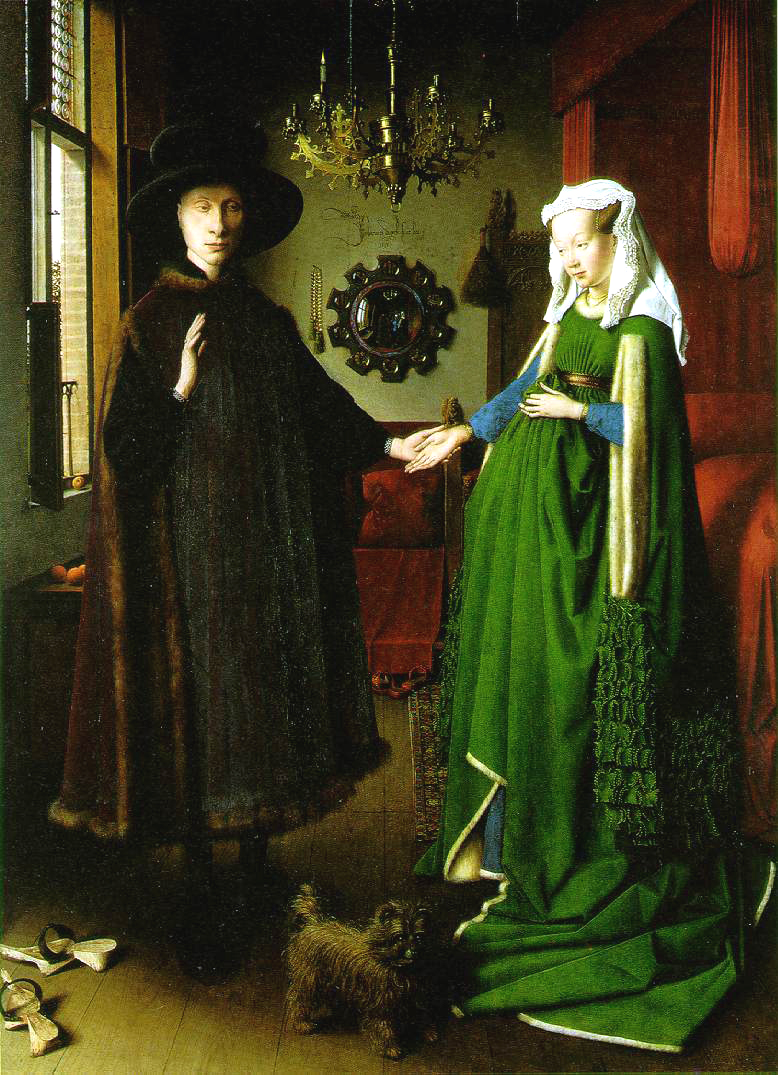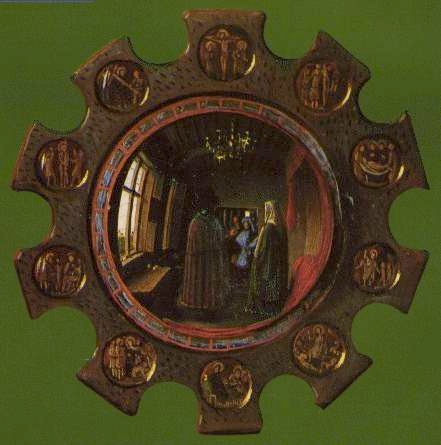 The Arnolfini Marriage
(1434), by Jan van Eyck
(c. 1395-c. 1441)
The Arnolfini Marriage
(1434), by Jan van Eyck
(c. 1395-c. 1441)
This portrait was probably commissioned by the merchant Giovanni Arnolfini to commemorate his marriage to Giovanna Cenami. The painting is both notable for its rich nuptial symbolism and striking for its close attention to the material trappings of wealth. The solitary flame burning in the chandelier can be interpreted as the bridal candle; this nuptial symbolism is tied to an image of St. Margaret, the patron saint of women in childbirth, carved on the high chairback. The companion dog can be seen as a symbol of faithfulness; the fruit on the window ledge may stand for fertility and the fall from Paradise. Equally arresting is van Eyck's meticulous, loving attention to signs of Arnolfini's commercial success and the profusion of belongings it has produced: for example, the convex Venetian mirror on the back wall -- famous its reflection, which includes van Eyck's self portrait -- counts as an overt assertion of material wealth (see below). As Lisa Jardine writes, the painting
is packed with details of acquisitiveness...it invites the viewer's eye to dwell on the oriental rug, the settle and high-backed chair with their carved pommels, the red-canopied bed, whose hangings echo the cloth and cushions on the chairs. Our eye is irresistibly drawn to the lovingly painted, heavily worked fabrics of the bride's sumptuous green gown with its fur-lined sleeves heavy with trucking and stitching, the crimping of her lavishly layered headress, the rich velvet, furt-edged over-garment of the bridegroom. The strongly illuminated, discarded pattens or clogs indicate that their wearers were above stepping in the muddy Flanders streets.Even Giovanna Cenami is presented as a sort of commodity: van Eyck makes no effort to convey her real appearance but describes her stereotypically, "virtually identical" in appearance "to other female figures in other paintings, down to the details of her face and expression. She is as much a model of womanhood (owned with pride by her wealthy spouse) as the carved saint [Margaret] on the pommel of the chair."

Detail: Arnolfini's Expensive Convex Mirror
Quotation: Lisa Jardine, Worldly Goods: A New History of the Renaissance (New York: W.W. Norton, 1996). Oil on wood, 81.8 x 59.7 cm (32 1/4 x 23 1/2 in); National Gallery, London. Image source: WebMuseum of Art.